This scene in the film The Mask shows the protagonist Stanley in prison after being caught by police when in his Mask character. This short clip from the film allows us to truly see first-hand the love that Milo has for his owner, as well as the intelligence that he has. The pet- relationship that Stanley and Milo have is one-sided throughout the film, and this scene in particularly displays Stanley’s dependence on Milo to get him out of trouble and, in short, save the day. Milo attempts many times to jump into the window where Stanley is and, as he finally does it, the camera shot slows down and we see him jump in slow motion, as if he was flying, into Stanley’s arms.
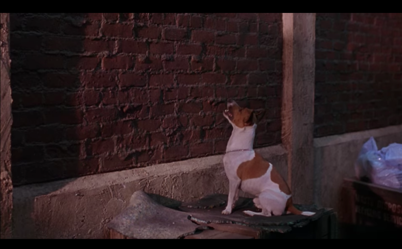
Milo gets prepared to jump up the wall to Stanley. 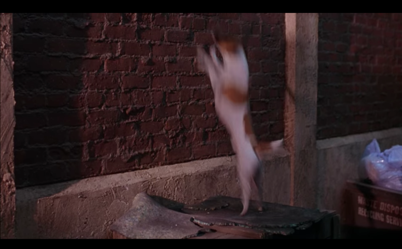
The shot slows down. 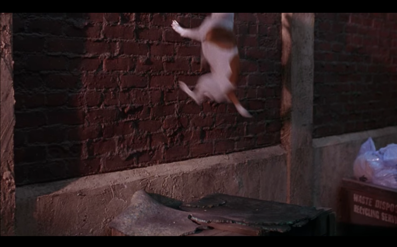
Milo jumps through the air in slow motion… 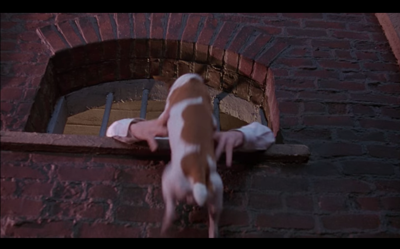
straight into Stanley’s arms.
By showing us this in slow motion, the director is encouraging us to find humour in this scene, offering a moment of comic relief away from the more serious action. The leap Milo takes to reach Stanley is physically impossible: Milo is a Jack Russell and therefore has both a small body and legs, making this scene unrealistic and almost fantastical. The choice of breed enhances the humorous nature of the scene further, as choosing a bigger breed of dog would’ve made the scene more realistic and therefore not as comical, yet Milo being a small breed makes the scene more absurd, giving the scene its comedic value. However, by presenting Milo as Stanley’s rescuer, there is clarity to the true nature of their relationship and the reliance that Stanley has on Milo to get him out of prison, instead of doing it himself. It presents Stanley as weak and unappreciative of his loving pet’s efforts to help him, and encourages us to view Milo as the courageous and smart character out of the two. The heroic and dramatic non-diegetic music adds further to the comedy and unrealistic nature of the scene: Milo is just a pet, yet here he is expected to be more than just man’s best friend, but also his owner’s saviour and hero, and a loyal companion.
Despite feelings of earnest towards Milo, this scene primarily offers comical relief from the dramatic storyline happening outside of the prison. The struggle Milo goes through in order to reach the window to the cell as well as the disheartened reactions from Stanley encourage us to laugh at Milo’s failure, as well as root for his success. By showing Milo’s difficulty in reaching Stanley, Russell actively incites the audience to lose faith in Milo, and believe that it is impossible for him to make the jump. So, when Milo is successful and reaches Stanley, we feel surprised that he has been able to jump so high after it seemed he was going to fail. The dramatic nature of the scene and the representation of Milo as the saviour and hero encourages us to have faith in him as a character: he is clearly not an ‘ordinary’ pet, and the pet-relationship he has with Stanley is extraordinary compared to owners and their pets in reality.
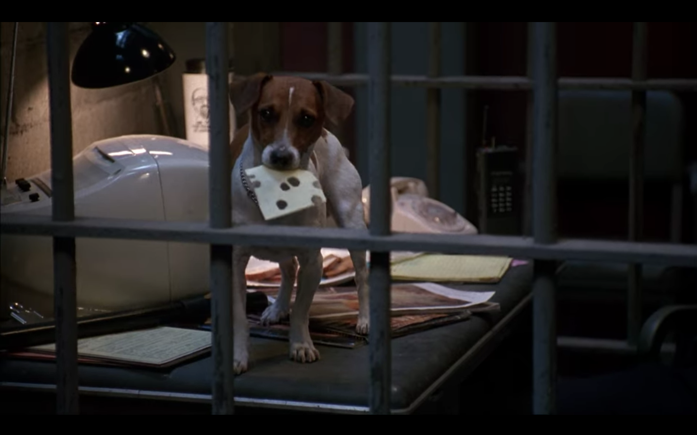
It is also entertaining to see the human-like interaction that Milo has with his owner: he is able to understand human words and sentences, not just commands that he has been taught. When Stanley tells Milo to get the keys off the security guard, Milo instead picks up the cheese that is on the guard’s sandwich. This adds a humorous and light-hearted tone to the scene, as it plays on the idea of dogs always thinking about food, and suggests Milo is trying to get away with having a bite to eat.
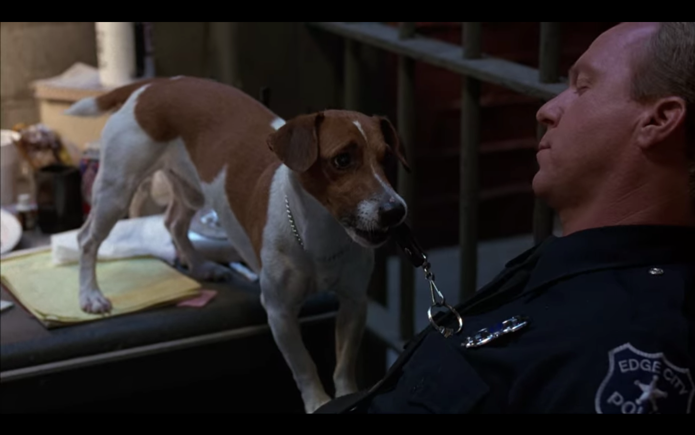
Yet, it also presents Milo as being intelligent: cheese and keys sounds very similar when spoken aloud, and after Stanley tells Milo to get the keys instead, he obeys and is successful in retrieving them. Not only does this suggest Milo is incredibly intelligent, but it presents Stanley as being ignorant and representative of the self-centeredness of human nature. Stanley believes that Milo should be able to understand what he is saying, despite any evidence that Milo has been taught to recognise those words, which completely bypasses the reality of the language barrier between humans and animals.
The frustration that Stanley shows when Milo picks up the keys suggests that he expects more from Milo: since he was able to jump up into the window, it is as if Stanley has forgotten that he is still a dog, and still has human-animal barriers and boundaries that all other dogs have. Despite this, Milo is able to differentiate the two objects in the end, further showing his intelligence as well as the unnecessary irritation that Stanley shows towards him.
For the audience this is both charming and entertaining: Milo is a stereotypical cute dog so, regardless of what he does, the audience will be amused, yet this scene presents him as a necessary sidekick for Stanley, who appears a lot smarter than his owner. Milo’s loyal nature is one that displays his love for Stanley, as well as his intelligence, and he is presented in a way that is accurate to the characteristics that a Jack Russell possesses.